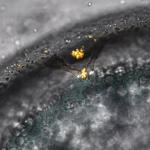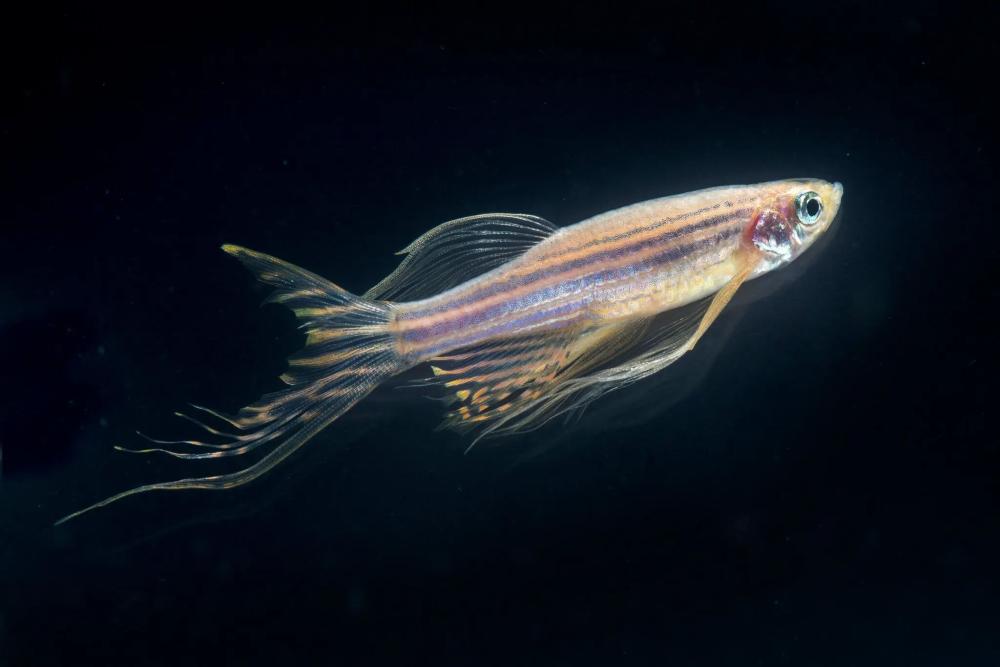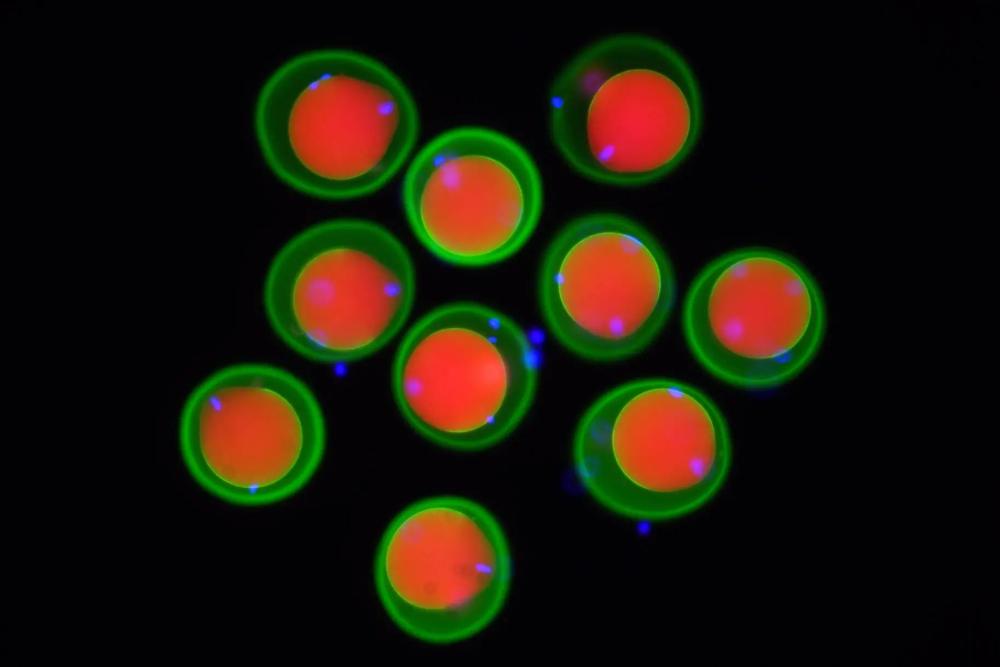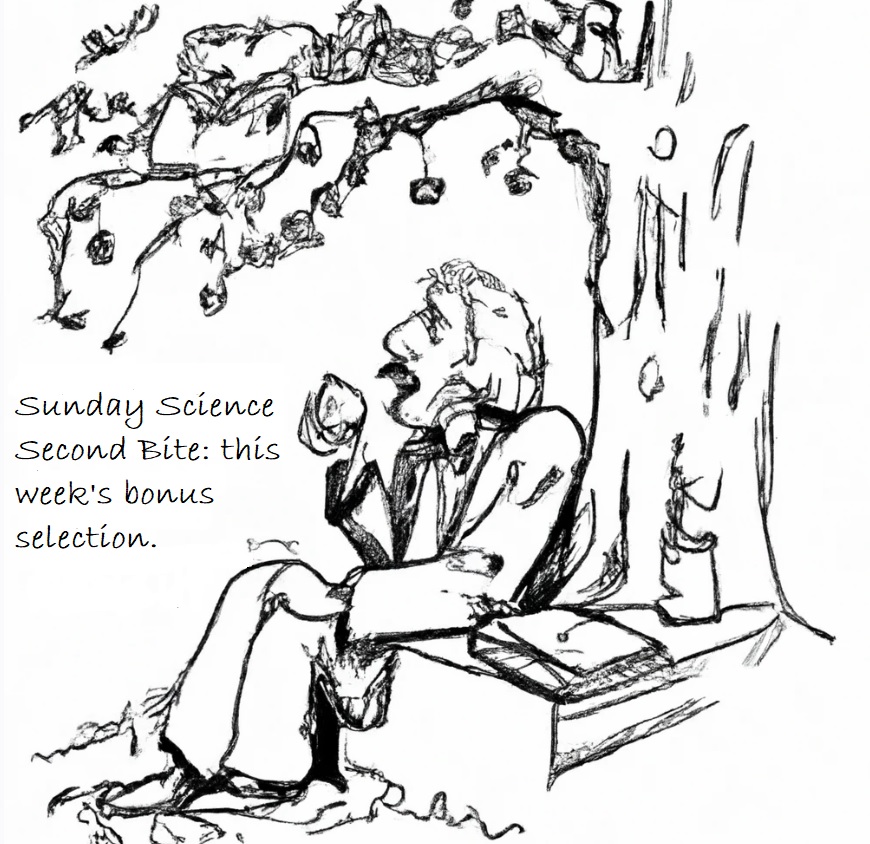Sunday Science: Sperm Can’t Unlock an Egg Without This Ancient Molecular Key

They’re the original odd couple: One is massive, spherical and unmoving. The other is tiny, has a tail and never stops swimming. Yet the union of egg and sperm is critical for every sexually reproducing animal on Earth.
Exactly how that union occurs has long been a mystery to scientists. A study published Thursday in the journal Cell that relied on Nobel Prize-honored artificial intelligence technology shows that an interlocked bundle of three proteins is the key that lets sperm and egg bind together. That crucial bundle is shared by animals as distantly related as fish and mammals, and most likely including humans.
For nearly all animals on Earth, life begins with a sperm cell making its way to an egg’s cell membrane. Somehow, the two cells recognize each other and bind together. Then, in a flash, the sperm head passes into the egg, as if stepping through a door. Now the fused cell is a zygote and ready to grow into a new animal.
The egg of a zebrafish, marked in blue, being fertilized by a sperm, marked in orange. Credit...Institute of Molecular Pathology
In earlier research, scientists had found four proteins on mammal sperm that are also present on fish sperm and are needed for fertilization. But no one knew whether they might work as a team to enter an egg, or how.
In the new study, Andrea Pauli, a molecular and developmental biologist at the Research Institute of Molecular Pathology in Vienna, and collaborators across several institutions asked how sperm proteins might team up during fertilization.
The researchers relied on AlphaFold, a technology that shared the Nobel Prize in Chemistry last week. It uses A.I. to predict the shape of a protein. With AlphaFold, the team could compare the four sperm proteins shared across mammals and fish against a library of about 1,400 other proteins found on cell surfaces in zebrafish testes, looking for potential partners.
In the new study, Andrea Pauli, a molecular and developmental biologist at the Research Institute of Molecular Pathology in Vienna, and collaborators across several institutions asked how sperm proteins might team up during fertilization.
The researchers relied on AlphaFold, a technology that shared the Nobel Prize in Chemistry last week. It uses A.I. to predict the shape of a protein. With AlphaFold, the team could compare the four sperm proteins shared across mammals and fish against a library of about 1,400 other proteins found on cell surfaces in zebrafish testes, looking for potential partners.

With AlphaFold, researchers compared four sperm proteins shared across mammals and fish against a library of proteins found in zebrafish testes, looking for potential partners. Institute of Molecular Pathology

A fluorescence microscopy image of mouse eggs, in red and green, and sperm, in blue. Earlier research had identified proteins on mammal sperm that are also present on the sperm cells of fish. Yonggang Lu/Osaka University
“We wanted to find something that we knew would be at the right place and at the right time,” said Victoria Deneke, a postdoctoral researcher in Dr. Pauli’s lab.
“Other people at the institute were not so happy,” Dr. Pauli added.
Finally, AlphaFold predicted that two of the original shared sperm proteins would bind to each other, along with a third protein that was previously unknown, creating a team of three.
Lab experiments confirmed the program’s guess: Male zebrafish missing the newly discovered third protein were infertile, as were male mice. Their sperm swam normally but couldn’t fuse with an egg. The scientists also found biochemical evidence that the three sperm proteins were working as a unit, both in zebrafish and humans.
It’s likely that the same crucial bundle exists in many — or all — animals with a backbone, Dr. Pauli said.
She described the sperm protein bundle as a kind of key, which fits with a lock on an egg cell. In fish, that lock is a protein named Bouncer — appropriately, as the sperm head can’t enter the egg without it.
A comparison of the three proteins in zebrafish, mice and humans. Institute of Molecular Pathology
Earlier research also identified a lock molecule in mammal eggs, which binds to one of the proteins in the three-protein bundle. Oddly, though, the mammalian lock isn’t Bouncer. It’s an unrelated protein called Juno.
That means somewhere in history, animals must have evolved different egg proteins to bind the sperm protein bundle. That presents a mystery, Dr. Pauli said: The lock has changed, yet somehow, “the key on the sperm stayed the same.”
“We would love to know the answer,” she added.
Amber Krauchunas, a reproductive biologist at the University of Delaware who was not involved in the new research, called the new paper “really exciting.”
Earlier this year, a different research group independently used AlphaFold and predicted the existence of the same three-protein bundle in mammals. “The fact that two independent groups came to the same conclusions certainly increases our confidence in the results,” Dr. Krauchunas said.
Even so, she said, “more work certainly remains to uncover the mysteries of fertilization.” For example, some sperm proteins are known to be shared across mammals and fish but aren’t part of this bundle; what are they doing?
“This is such a fundamental question with so few molecular answers,” Dr. Pauli said. “It’s amazing.”
About Elizabeth Preston: I’m a freelance science journalist and editor. My writing has appeared in publications including the New York Times, Science, the Boston Globe, the Atlantic, and Orion. Right now I’m working on a book about the evolution of parenting, which will be published by Viking. I won the 2017 Kavli Gold Award in Children’s Science News. In less serious moods, I’m also a humor writer for outlets such as McSweeney’s, Parents, and Real Simple.
Between 2008 and 2014 I was the editor of Muse, a magazine about science and ideas for kids. I also wrote almost 400 news stories there in the voice of a highly knowledgeable cow. Other past projects include Child Proof, a parenting science column published by Medium, and Inkfish, a science blog hosted by Discover. “Inkfish” is another name for cephalopods such as octopuses and squid.
Besides cephalopods, I write most often about evolution, animal behavior, health, parenting, and intersections between science and society. I studied biology and English at Williams College. In order from least to most tedious, I’ve used the following lab skills: sucking up fruit flies from tree fungi; sequencing human DNA; liquefying leaves; and sorting grass roots with tweezers. I live in the Boston area with my husband and two daughters.
For updates on my writing, subscribe to my biweekly newsletter here.
Subscribe to the New York Times

MicroRNA − a new Nobel laureate describes the scientific process of discovering these tiny molecules that turn genes on and off
Victor Ambros
The Conversation
The 2024 Nobel Prize in physiology or medicine goes to Victor Ambros and Gary Ruvkun for their discovery of microRNA, tiny biological molecules that tell the cells in your body what kind of cell to be by turning on and off certain genes.
The Conversation Weekly podcast caught up with Victor Ambros from his lab at the UMass Chan Medical School to learn more about the Nobel-winning research and what comes next. Below are edited excerpts from the podcast.
October 17, 2024
